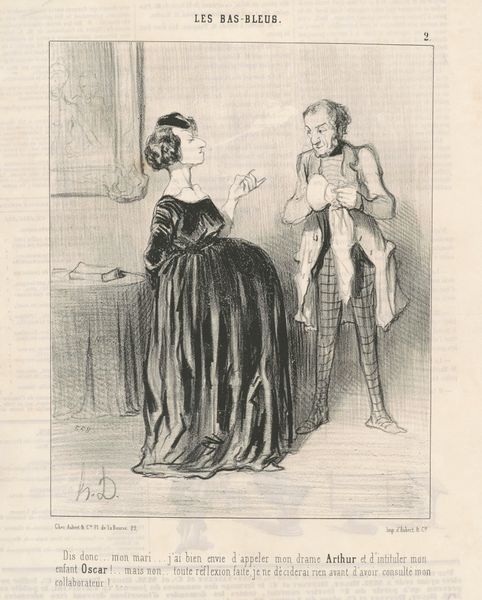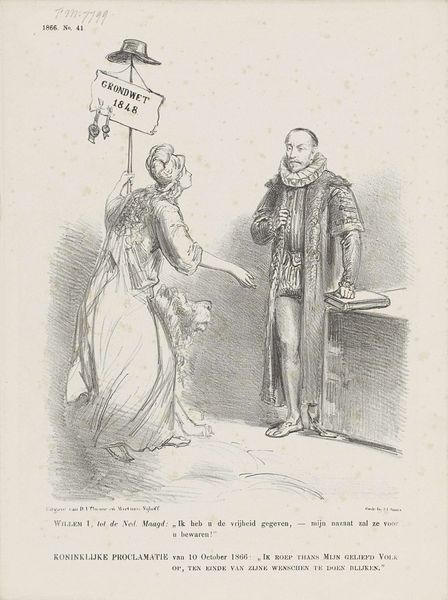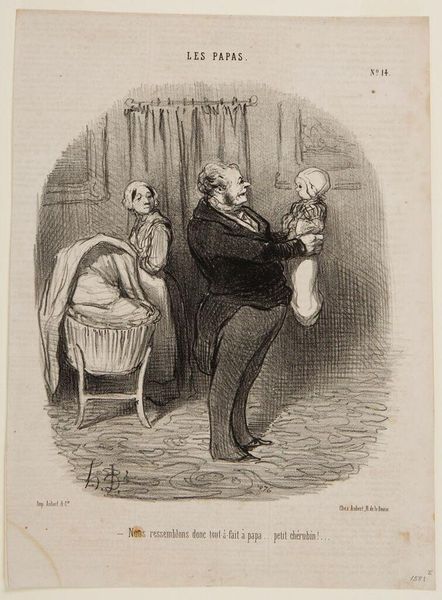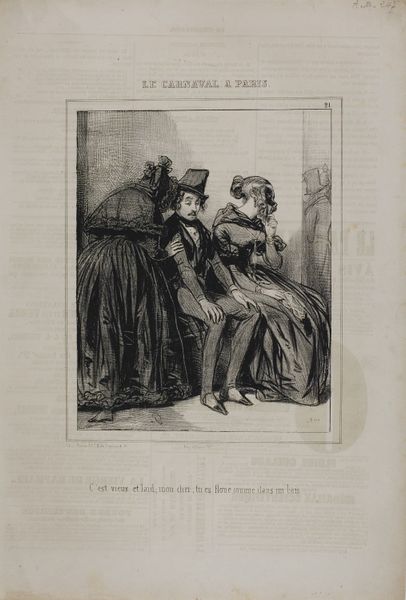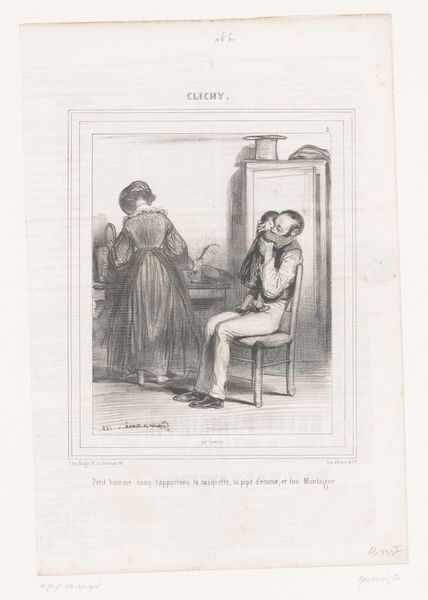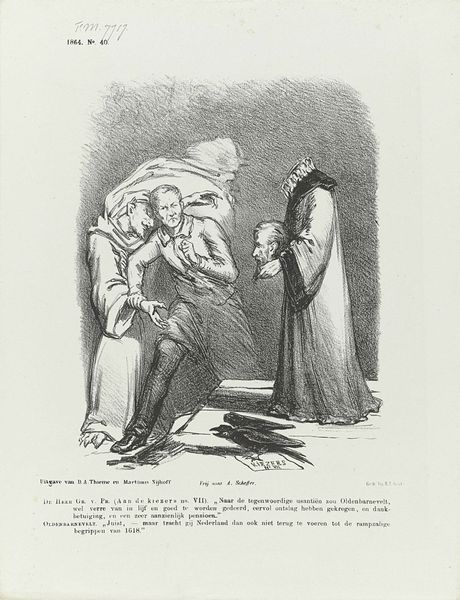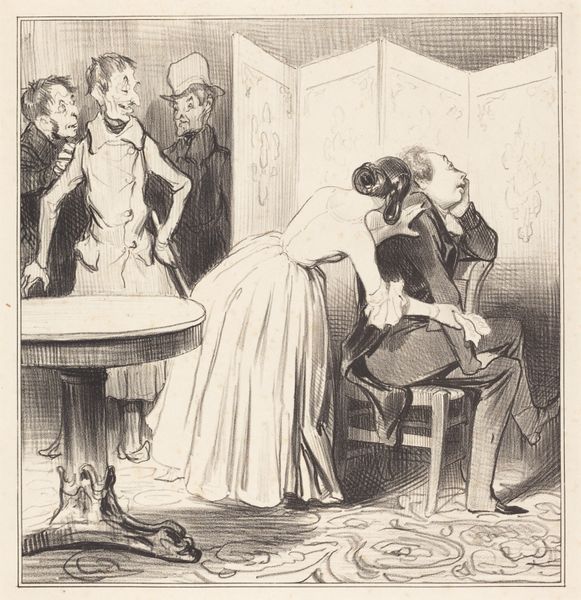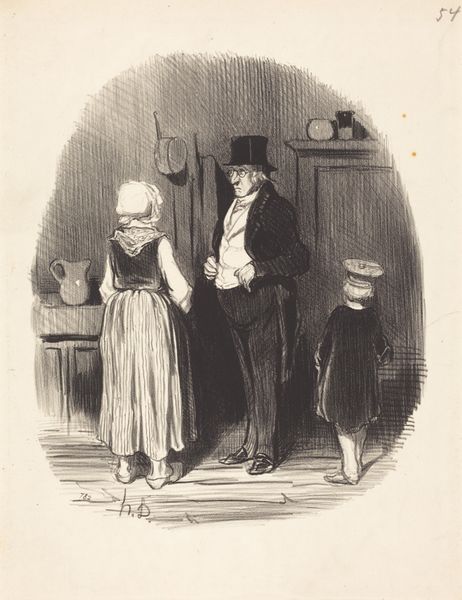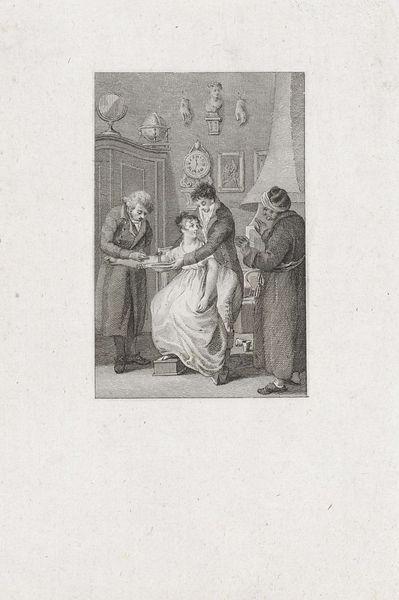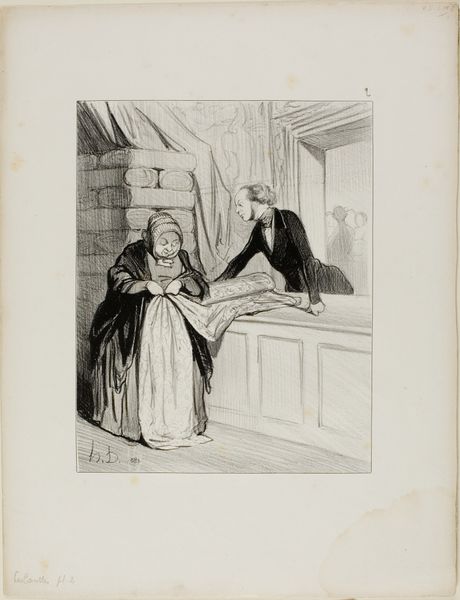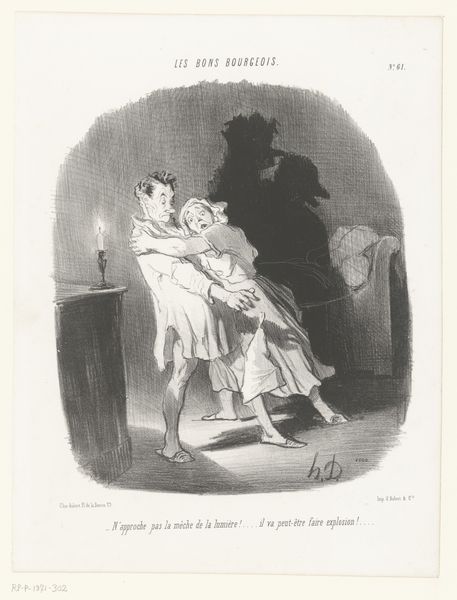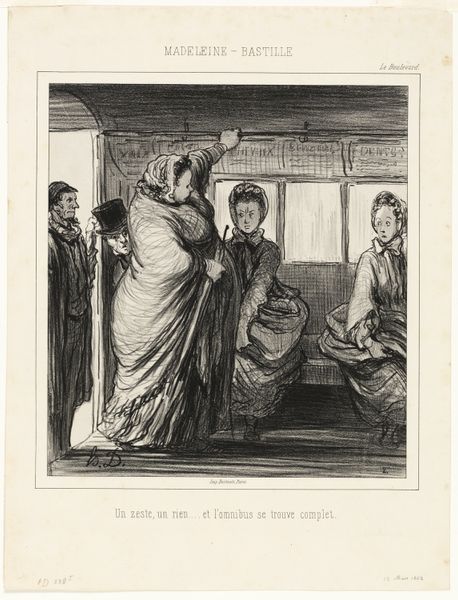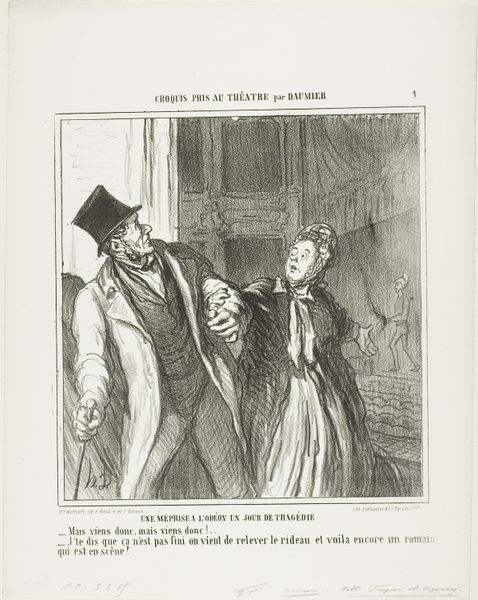
“You tramp! I would like to see you drown in your beer! Leaving me alone like that with my three children, he gives me twelve sous, and when he comes back in the evening, he asks for his change!,” plate 48 from Moeurs Conjugales 1842
0:00
0:00
drawing, lithograph, print, paper
#
drawing
#
lithograph
# print
#
caricature
#
paper
#
romanticism
#
france
#
genre-painting
Dimensions: 247 × 210 mm (image); 342 × 266 mm (sheet)
Copyright: Public Domain
Editor: This is a lithograph by Honoré Daumier from 1842, titled “You tramp! I would like to see you drown in your beer! Leaving me alone like that with my three children, he gives me twelve sous, and when he comes back in the evening, he asks for his change!,” from the Moeurs Conjugales series. It’s a domestic scene, but there’s something quite unsettling about the interaction between the man and the woman holding a child. What social commentary is Daumier offering here? Curator: Absolutely. Daumier’s lithograph acts as a stark mirror reflecting the economic and gendered inequalities of 19th-century France. Consider the title itself; the vitriol gives voice to the silent suffering of so many women trapped in patriarchal structures. What does it say to you about power dynamics? Editor: I notice how the man is central, literally holding a beer and a pool cue. She is relegated to the side with a child, almost pleading. Curator: Precisely. Daumier masterfully uses caricature to expose the social injustices faced by working-class women. This image critiques not just individual behavior, but the broader societal structures that enabled such exploitation. We have to think about the social context – the laws, the cultural norms – that confined women to these roles. The economic dependence that effectively disenfranchised her. Editor: So, Daumier is using humor to highlight a very unfunny situation of subjugation? Curator: Exactly. His romantic style isn’t about idealized love. It’s about realistically showing how society enabled men's behaviour. Can we truly appreciate art without considering its socio-political relevance? How can art catalyze social awareness? Editor: I see the piece differently now. It's not just a funny scene; it's a denouncement of a patriarchal system. Curator: And hopefully, an invitation to dismantling it. The role of the activist artist is not only to reflect but to push for that crucial transformation.
Comments
No comments
Be the first to comment and join the conversation on the ultimate creative platform.
